Food processors have become an indispensable tool in modern kitchens.
Their multifunctional capabilities have made them a favorite among both amateur cooks and professional chefs.
However, to truly harness their potential, one must understand how to use a food processor effectively.
Short Summary
- Importance of Knowing How to Use a Food Processor: A food processor can be a game-changer in the kitchen, but only if used correctly. Understanding its functions can lead to quicker, more efficient food preparation.
- Versatility in Food Prep: From chopping vegetables to kneading bread dough, the range of tasks a food processor can handle is impressive. It's not just about speeding up tasks but also about expanding culinary possibilities.
- Ease of Use: Modern food processors are designed to be user-friendly. With a variety of attachments and straightforward settings, even beginners can start using them with minimal guidance.
We've made a guide on how to set up a food processor. See it here before you start using your knew food processor.
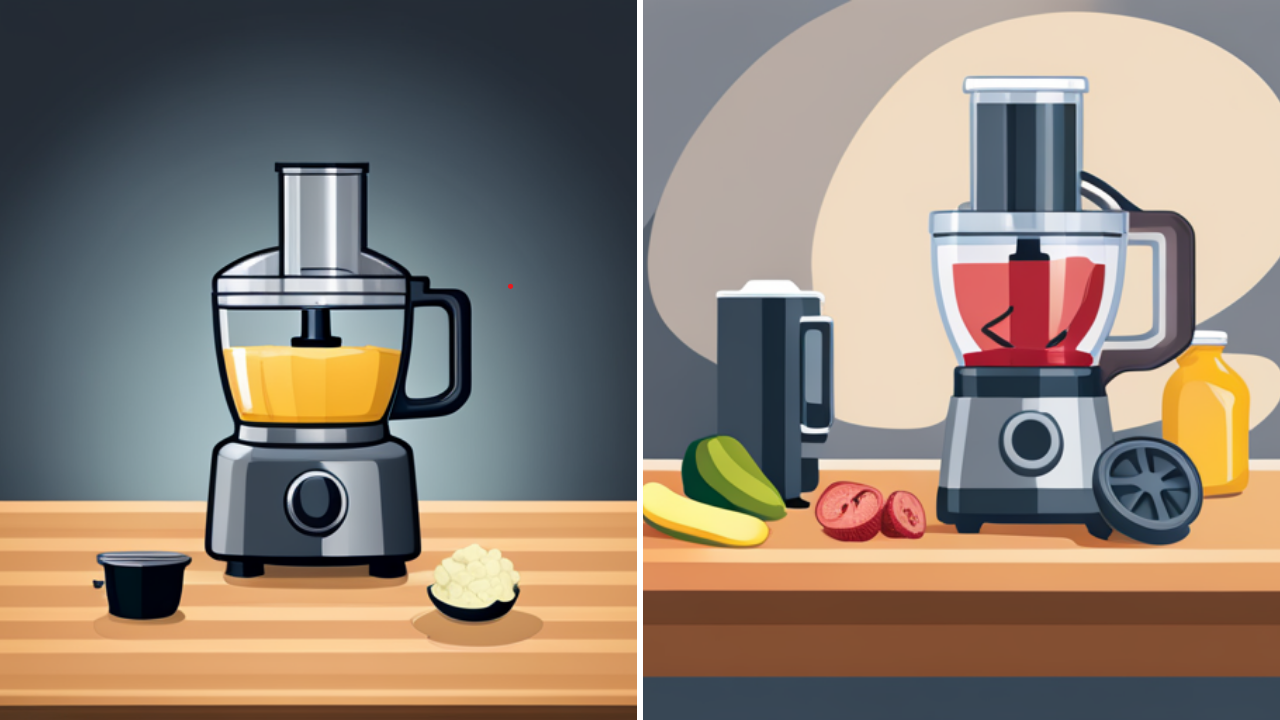
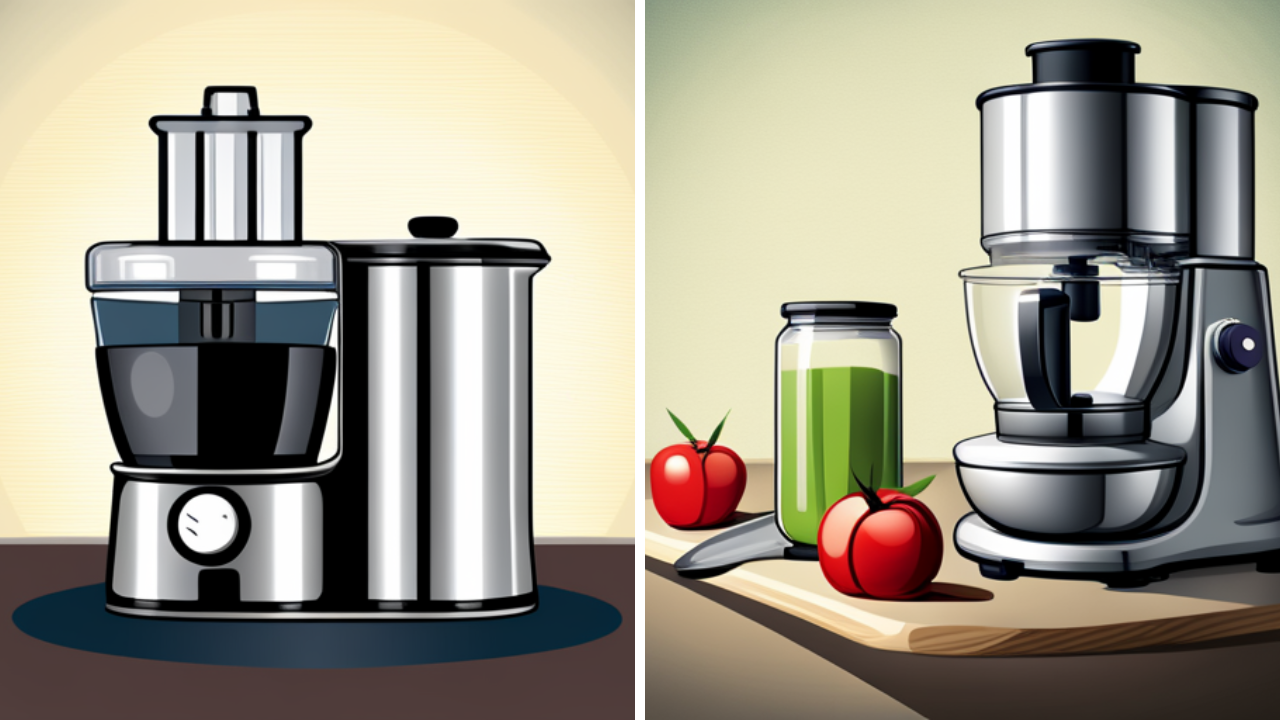
Why Use a Food Processor?
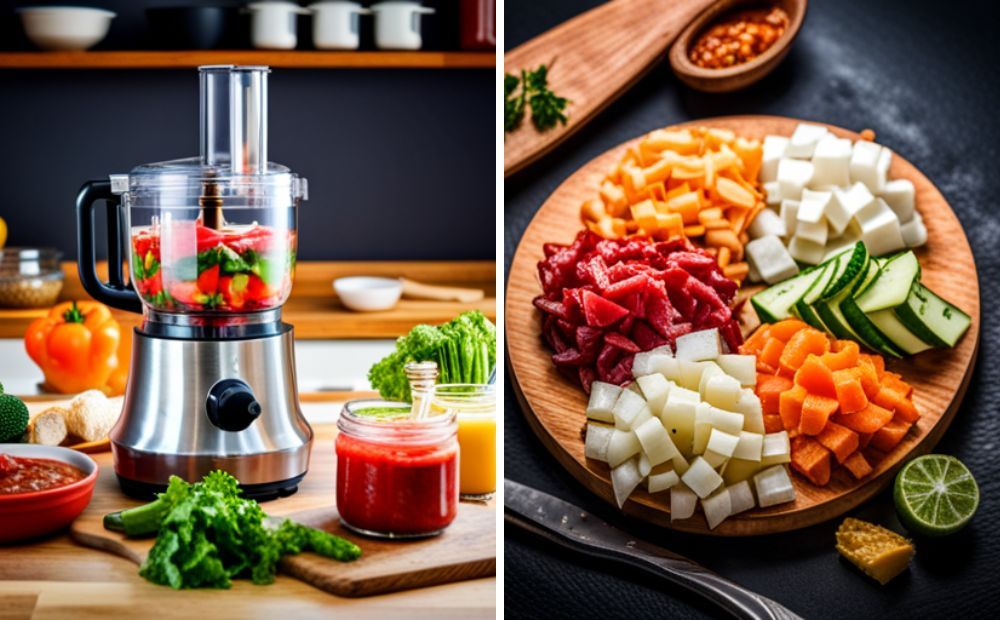
A food processor and sliced diced and chopped food
Speeding Up Food Prep Tasks:
One of the primary benefits of a food processor is its ability to handle time-consuming tasks swiftly.
Chopping, dicing, and shredding can be done in a fraction of the time it would take manually.
This efficiency is especially beneficial when preparing meals for large groups or during busy days.
Achieving Consistent Results:
Consistency is key in many recipes. Whether you're making a salsa, a pie crust, or a soup, achieving uniform slices, dices, or purees can elevate the dish's texture and taste.
A food processor ensures that ingredients are processed uniformly, leading to better culinary outcomes.
Versatility in Handling Various Ingredients and Recipes:
Food processors are not limited to a single task. With various attachments, they can handle a wide range of ingredients and recipes.
From making dough to grinding nuts, the possibilities are vast.
To explore the different uses of food processors, check out KitchenAid's Guide on Food Processor Uses.
For a deeper dive into the world of food processors, Magimix offers insights that can be invaluable for both beginners and seasoned users.
This article serves as an introduction to the world of food processors, highlighting their importance, versatility, and their high speed and ease of use.
As you delve deeper into the culinary world, you'll find that a food processor can be your trusted ally in creating delicious and consistent dishes.
Step-by-Step Guide to Using a Food Processor
Using a food processor can significantly simplify your kitchen tasks, but to get the most out of this versatile appliance, it's essential to set it up and assemble it correctly.
Here's a step-by-step guide to help you get started:
Step 1: Setting Up
Before you begin using your food processor, it's crucial to ensure it's set up properly assembled correctly to avoid any mishaps and ensure efficient operation.
- Plugging in the Food Processor: Start by plugging your food processor into a suitable electrical outlet. Ensure the cord is untangled and the plug fits securely into the socket.
- Choosing a Clear Space on the Kitchen Countertop: It's essential to place your food processor on a stable, clear space on your kitchen countertop. Ensure there's enough space around the appliance for easy access and to accommodate any attachments or additional components. Avoid placing it near the edge of the counter or close to any water sources to prevent accidents.
Step 2: Assembling the Base
Once your food processor is correctly positioned, the next step is to assemble processor bowl on its base.
- Attaching the Jug to the Base: Take the jug or bowl of the food processor and place it onto the base unit. Ensure it fits snugly and is aligned correctly with the base's grooves or notches.
- Positioning and Locking Mechanisms: Most food processors come with a locking mechanism to ensure the jug is securely attached to the base. Once the jug is in place, turn it (usually clockwise) until you hear a click or feel it lock into position. This locking ensures the jug doesn't move during operation, providing safety and consistent results.
Step 3: Choosing the Right Attachment
The true versatility of a food processor shines through its various attachments, each designed for specific tasks. Choosing the right one is crucial for achieving the desired results.
- Different Attachments and Their Uses: Food processors typically come with a range of attachments, including:It's essential to familiarize yourself with each attachment's purpose to utilize the food processor's full potential.
- Food Processor Blade: Ideal for chopping, mincing, and blending.
- Dough Blade: Specifically designed for kneading dough, especially homemade pizza dough.
- Slicing and Shredding Discs: Perfect for uniformly slicing vegetables or shredding cheese.
- Whipping Attachment: Used for whipping cream or egg whites.
- How to Attach the Main Blade and Other Attachments: To attach the main blade, place it over the central shaft of the food processor until it sits securely. For other attachments like discs, they usually fit onto a separate disc stem, which then sits on the central shaft. Always ensure that the chosen attachment is securely in place before operating the machine.
Step 4: Securing the Lid
Once the appropriate attachment is in place, securing the lid is the next crucial step.
- Properly Placing the Lid: Align the lid with the top of the food processor's jug or bowl. Most lids have grooves or notches that match with those on the jug, ensuring a snug fit.
- Ensuring Safety Measures: Many food processors have safety features that prevent the machine from operating unless the lid is securely locked in place. Once the lid is on, turn it (usually clockwise) until you hear a click or feel it lock. This safety mechanism ensures that the contents don't spill out, and fingers are kept safe from the machine's moving parts.
Step 5: Operating the Food Processor
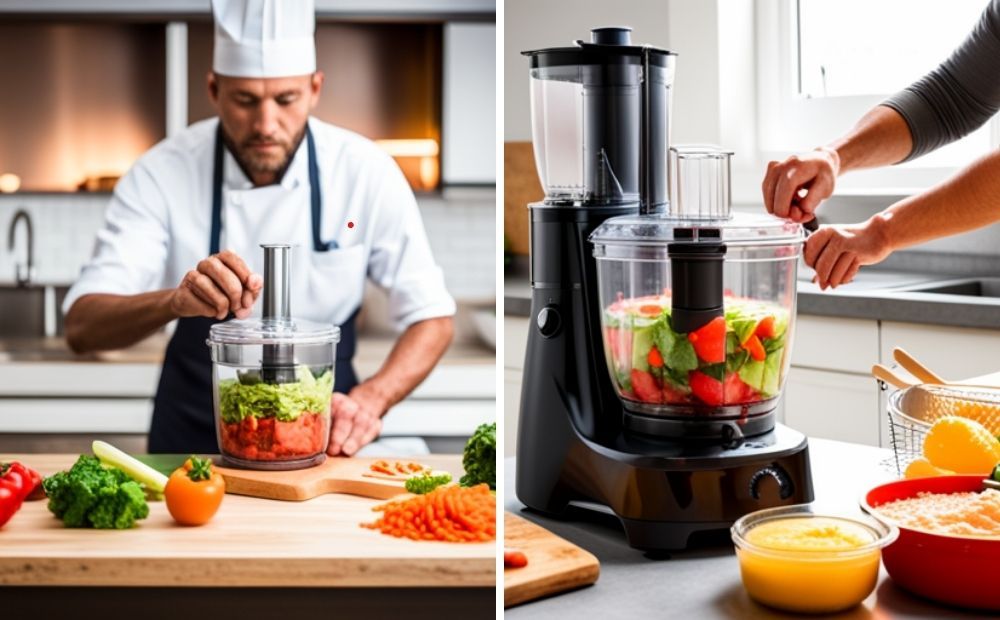
Using a food processor
Once your food processor is set up and ready, it's time to get it running.
- Starting the Motor: Most food processors have a straightforward 'start' or 'on' button. Pressing this will get the motor running and the blades or discs spinning. Ensure the machine is stable on the countertop before starting.
- Using the Pulse Function and Continuous Mode:
- Pulse Function: This function allows for short bursts of processing, giving you more control over the consistency. It's especially useful for tasks like chopping where you might want to avoid over-processing.
- Continuous Mode: For tasks that require extended processing, like pureeing soups or kneading dough, the continuous mode lets the machine run non-stop until you switch it off.
By following these steps, you ensure that your food processing tasks are carried out efficiently and safely.
Remember, the key to mastering any kitchen appliance is understanding its functions and practicing regularly.
Step 6: Adding Ingredients
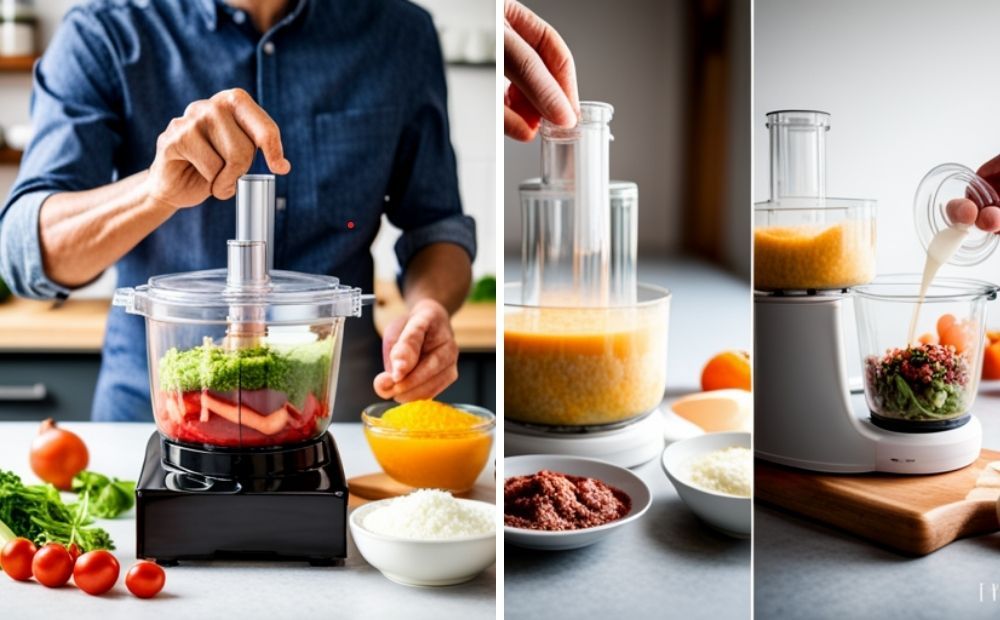
Adding ingredients into a food processor
With the machine running, it's time to introduce your favorite recipe, and ingredients.
- Properly Feeding Ingredients: Always ensure that ingredients are cut into sizes that can easily fit into the food processor. This ensures even processing and prevents the machine from getting jammed.
- Using the Funnel for Safety and Efficiency: Most food processors come with a funnel or feed tube. This allows you to add ingredients safely while the machine is running. It's especially useful for tasks like slicing or shredding, where ingredients are processed as they're fed through the funnel.
Step 7: Using the Food Processor for Various Tasks
A food processor is a versatile kitchen tool that can handle a multitude of tasks with ease.
From chopping vegetables to kneading dough, it's a true culinary workhorse. Let's delve into how to use it for various tasks effectively.
Chopping and Dicing
Chopping and dicing can be time-consuming when done manually, but a food processor can make this task a breeze.
Best Practices:
- Cut ingredients into even-sized chunks before processing to ensure uniformity.
- Use the pulse function to control the size and consistency of the chop.
- Don't overfill the bowl; process in batches if necessary.
Common Mistakes to Avoid:
- Over-processing, which can turn ingredients into a mushy consistency.
- Not using the pulse function, leading to unevenly chopped ingredients.
- Forgetting to secure the lid properly, which can lead to spills.
Slicing and Shredding
Achieving uniform slices or perfect shreds can elevate many dishes.
Adjusting Thickness:
- Most food processors come with adjustable slicing discs. Ensure you select the desired thickness setting before starting.
- For manual adjustments, apply varying pressure on the pusher to achieve different thickness levels.
Techniques for Uniform Slices:
- Feed ingredients vertically for round slices and horizontally for longer, oval slices.
- Use a steady hand and consistent pressure when pushing ingredients through the feed tube.
To Knead Dough
Making dough is an art, and a food processor can be your perfect assistant.
The Right Consistency:
- Start with cold water when mixing dough to prevent over-activation of gluten.
- Add water gradually. The dough should come together into a ball but shouldn't be too sticky or dry.
Tips for Perfect Dough Every Time:
- Use the dough blade attachment, specifically designed for kneading.
- Once the dough forms a ball, let the processor run for another 30 seconds to ensure thorough kneading.
- Allow the dough to rest after kneading, which helps in gluten development and makes it easier to handle.
Blending and Pureeing
From smoothies to soups, achieving the right texture is crucial.
Achieving the Right Texture:
- For smoothies, start with liquid ingredients first, followed by solids. This ensures a smoother blend.
- For soups and sauces, ensure hot ingredients have cooled slightly before processing to prevent damage to the plastic components.
Ingredients to Avoid:
- Extremely hard ingredients like coffee beans, which might damage the blades.
- Overly fibrous materials like sugarcane, which can wrap around the blade and hinder the motor.
Mastering the usage of food processor for various tasks can significantly enhance your culinary skills.
With practice and by following these guidelines, you'll be able to make the most of this versatile kitchen appliance.
12 Easy Ways to Use a Food Processor | Kitchen Essentials | You Can Cook That - All Recipes
Step 8: Monitoring the Process
As your food processor works its magic, it's essential to keep an eye on all the ingredients in progress.
- Observing the Consistency and Texture: Depending on the task, you'll want to achieve a specific consistency or texture. Whether it's a finely chopped salsa, a smooth puree, or a well-kneaded dough, regularly checking will ensure you get the desired result.
- Knowing When the Process is Complete: Familiarize yourself with how the finished product should look and feel. Once the food processor has achieved this, it's time to stop the machine. Over-processing can change the texture and even the taste of some recipes.
Step 9: Cleaning and Maintenance
A well-maintained food processor not only lasts longer but also performs better.
- Importance of Immediate Cleaning: Residue can harden and become difficult to remove if left unattended. Cleaning immediately after use ensures easier removal of food particles and prevents bacterial growth.
- Steps to Clean Different Parts:
- Dismantle the food processor, removing the blades, discs, and jug.
- Wash each part with warm soapy water. Some parts might be dishwasher safe, but always refer to the manufacturer's instructions.
- Use a soft brush to clean crevices and blade edges.
- Drying and Storing: After washing, thoroughly dry each component to prevent moisture damage or mold growth.
Step 10: Storing the Food Processor
Proper storage ensures the longevity and efficiency of your appliance.
- Reassembling for Storage:
- Once all parts are clean and dry, reassemble the food processor. This not only saves space but also ensures that all components remain together.
- Tips for Ensuring Longevity:
- Store in a cool, dry place away from direct sunlight.
- Ensure the storage area is free from potential water or moisture exposure.
- Regularly check the cord and plug for any signs of wear or damage.
By following these steps, you ensure the optimal performance and longevity of your food processor.
A little care and attention can go a long way in ensuring this kitchen workhorse serves you well for years to come.
FAQs
Food processors are versatile kitchen tools, but they can also raise a few questions, especially for first-time users.
Here are some frequently asked questions and their answers:
Can I process hot ingredients in my food processor?
While some high-end food processors can handle warm ingredients, it's generally advisable to let hot ingredients cool down a bit before processing. This helps in preventing potential damage to the plastic components and ensures safety.
How often should I replace the blades?
Blades can last a long time if properly maintained. However, if you notice them becoming dull or if they're damaged, it's time for a replacement. Always use manufacturer-approved blades for replacements.
Is it safe to put food processor components in the dishwasher?
Most food processors come with dishwasher-safe parts, but it's always best to refer to the user manual. Some components, especially blades, might be better off hand-washed to maintain their sharpness.
Why won't my food processor start?
Most food processors have safety mechanisms that prevent them from operating unless they're correctly assembled. Ensure the lid is locked in place and the bowl is securely attached to the base.
Can I grind meat in my food processor?
Yes, most food processors can handle grinding meat. However, it's best to cut the meat into smaller chunks and ensure it's partially frozen for best results.
What are some food processor recipes I can make in a food processor?
You can make a variety of recipes with a food processor. Whipping up a homemade nut butter, like almond butter or even making a healthy ice cream can be accomplished in a food processor.
In the market for a food processor for small spaces? Check out our article for our top picks for mini food processors.
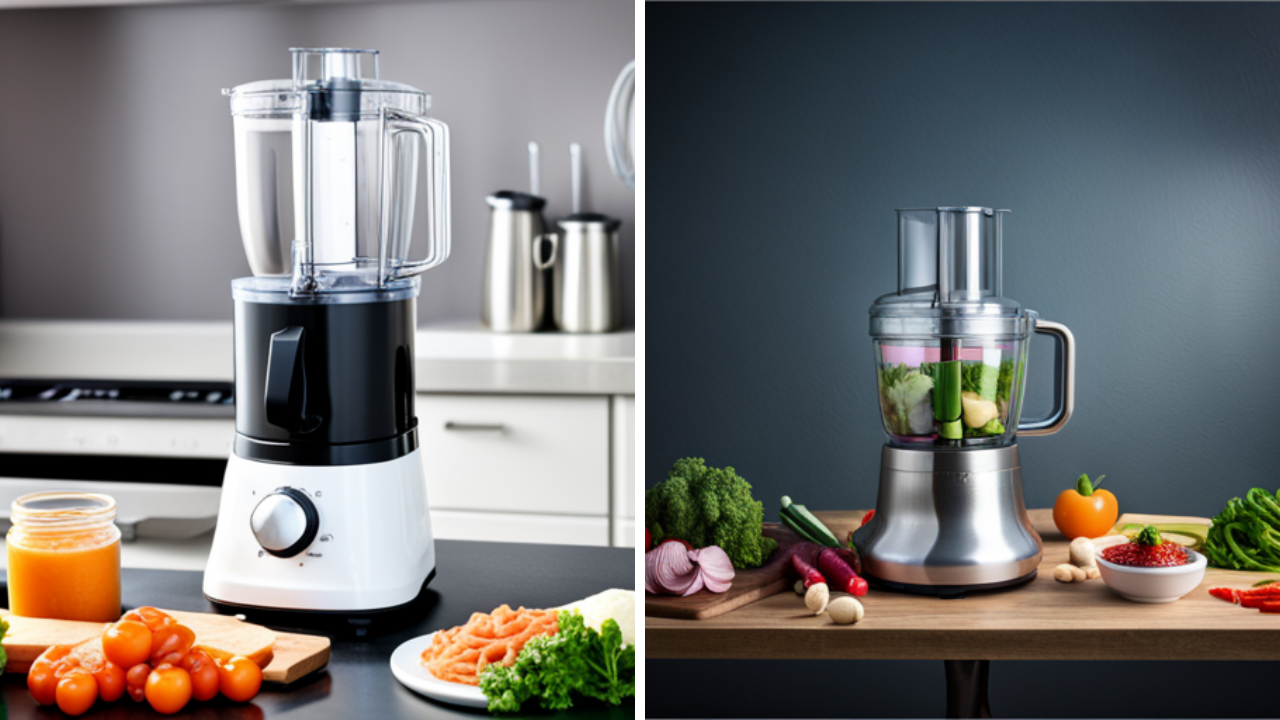
Other articles we have done on food processors that you may find enjoyable:
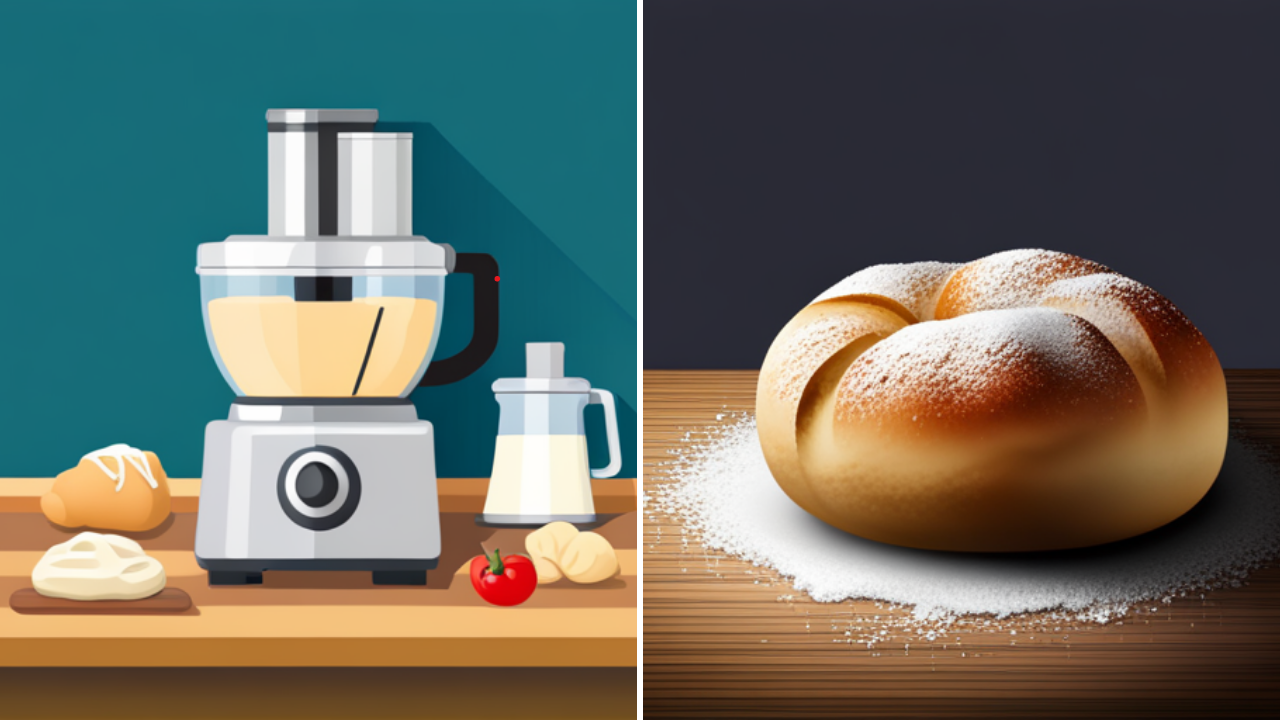
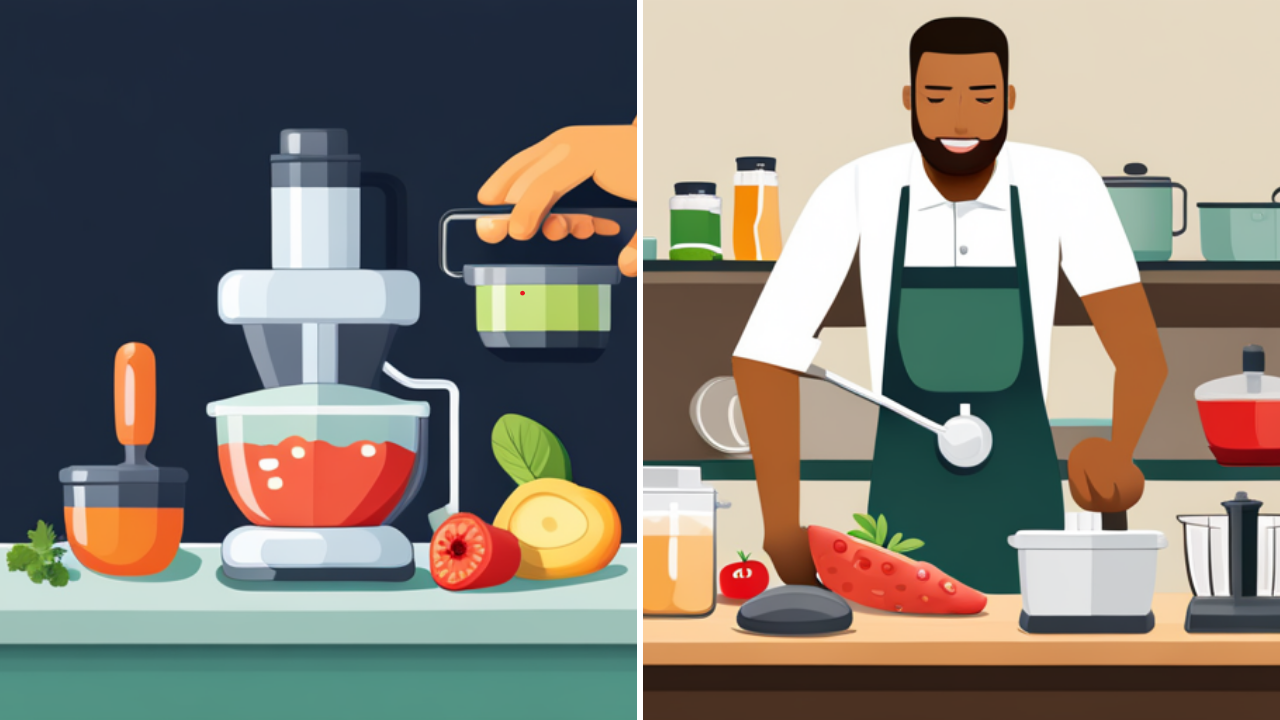
Remember, while these FAQs cover general queries, always refer to your food processor's user manual for specific guidance related to your model size food processor.
Happy Processing!!










